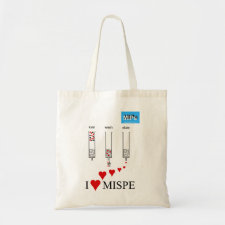
Authors: Rebelo P, Pacheco JG, Voroshylova IV, Cordeiro MNDS, Delerue-Matos C
Article Title: Development of a molecular imprinted electrochemiluminescence sensor for amitriptyline detection: From MD simulations to experimental implementation.
Publication date: 2021
Journal: Electrochimica Acta
Volume: 397
Article Number: 139273.
DOI: 10.1016/j.electacta.2021.139273
Alternative URL: https://www.sciencedirect.com/science/article/pii/S0013468621015632
Abstract: Amitriptyline (AMT) frequent presence in environmental waters reflects the continuous consumption growth and raises issues on the importance of its monitorization. In this work, a sensitive and selective electrochemiluminescence (ECL) sensor was constructed using molecularly imprinted polymer (MIP) recognition element for AMT detection. Molecular dynamics (MD) simulations were performed to select the best functional monomer. Precipitation polymerization was followed to prepare the MIP microspheres using methacrylic acid (MAA) as functional monomer, ethylene glycol methacrylate (EGDMA) as crosslinker and chloroform (CHL) as solvent. The MIP sensor was then prepared on a low cost and disposable screen-printed electrodes (SPCEs), previously modified with single-walled carbon nanotubes (SWCNTs), by drop coating a solution containing the MIP microspheres synthesized. The mechanism of detection was based in the system Ru(bpy)32+/AMT, where AMT acts as co-reactor of Ru(bpy)32+ ECL. Several parameters controlling the preparation process of the sensor and AMT detection were optimised. The MIP/SWCNTs/SPCE ECL sensor showed good analytical performance with a linear correlation between ECL signal and the AMT concentration ranging from 0.1 to 200 μM (R2 = 0.9991). The limits of detection (LOD) and quantification (LOQ) were found to be 0.4 μM (S/N=3) and 1.5 μM (S/N = 10), respectively. The MIP ECL sensor displayed good selectivity to recognise AMT molecules when compared with analoge structures and it was successfully applied in real water samples with good recovery values (90 to 112%). The developed MIP ECL sensor is suitable for integration with portable devices for AMT detection in environmental waters
Template and target information: amitriptyline, AMT
Author keywords: Electrochemiluminescence sensor, molecularly imprinted polymer, Molecular dynamic, Amitriptyline, water



Join the Society for Molecular Imprinting

New items RSS feed
Sign-up for e-mail updates:
Choose between receiving an occasional newsletter or more frequent e-mail alerts.
Click here to go to the sign-up page.
Is your name elemental or peptidic? Enter your name and find out by clicking either of the buttons below!
Other products you may like:
 MIPdatabase
MIPdatabase









